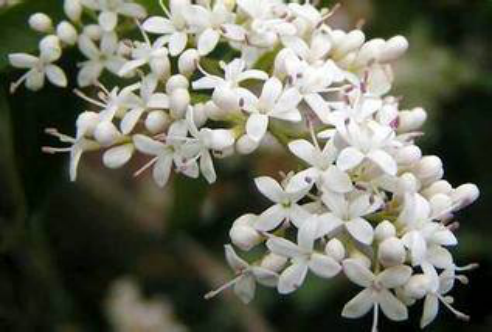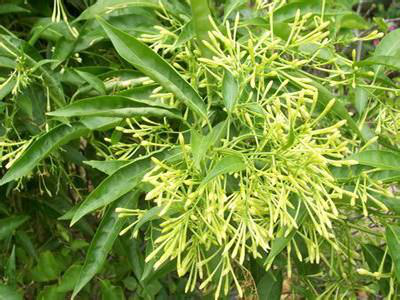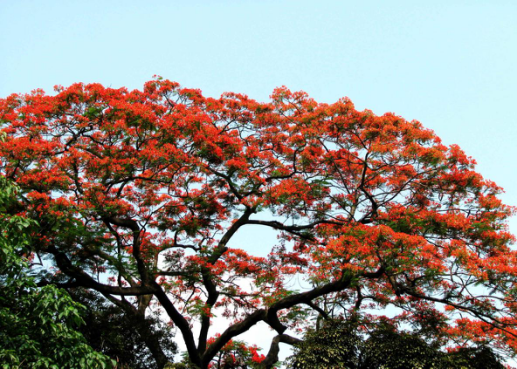The propagation of evening primrose
Branching
Nocturnal incense has a strong sprouting ability, so we divide it into quantitative plants or several plants from the root to propagate. This method is fast, but it also has some limitations.
Cuttage
The most suitable for cutting propagation in spring and autumn, night incense propagation ability is strong, easy to produce adventitious roots, can take the mother plant into the soil for cutting, the temperature is about 20 degrees to propagate the fastest, acidic soil is conducive to cutting propagation.
High extraction pressure
The branches of Nelumbo nucifera are hard and should not be bent and drawn. During the growth period, cut off the skin at the branch bifurcation in the same year or the next year, wipe it with soil to the wound, wrap it with thin film, and then cut off the branches after rooting and plant them.

The above is the introduction of night incense breeding, I hope it will be helpful to you! Thank you for your reading!
The Propagation method of Euphorbia angustifolia the efficacy and function of nocturnal incense
Night incense is also known as night fragrance, night orchid, night clove, thousand-mile incense, and so on. Today, we will share with you the breeding methods and the efficacy and function of night incense.
The propagation method of evening primrose:
1. Branch propagation. The sprouting ability of night incense is relatively strong, the plant is divided into quantitative plants or several plants from the root to propagate, this method is fast, but it will also be limited.
2. Cuttage propagation. Cutting propagation is carried out in spring and autumn, night incense has strong propagation ability and is easy to produce adventitious roots. the mother plant can be inserted into the soil for cutting. the propagation speed is the fastest when the temperature is about 20 degrees, and the acidic soil is conducive to cutting propagation.
3. Take high pressure branches to propagate. The branches of Nelumbo nucifera are hard and should not be bent and drawn. During the growth period, cut off the skin at the branch bifurcation in the same year or the next year, wipe it with soil to the wound, wrap it with thin film, and then cut off the branches after rooting and plant them.
The efficacy and function of night incense:
1. The ornamental function of evening primrose.
The fragrant flowers at night are full of fragrance, bloom in the evening, and give off a delicate fragrance when you have dinner. Nocturnal incense blossoms in summer and autumn, with slender branches and leaves. In the south, it is planted in the courtyard, in front of the window, by the pond and by the pavilion. You can smell the aroma of nocturnal incense when you take a walk after supper.
2. The medicinal value of Corydalis.
Night incense can be used as medicine, with the effect of clearing the liver and eyesight, can treat eye swelling and pain, measles on the eyes, corneal nebula, and so on.
3. The edible value of evening primrose
Evening primrose is edible. Fresh flowers and buds are edible. It is a semi-wild vegetable.
4. Mosquito repellent effect of night incense.
Night incense is relatively strong, and has a certain toxicity, mosquitoes hate this smell, so night incense has a good mosquito repellent effect. Usually, evening primrose is planted outdoors for both ornamental and mosquito repellent.
The propagation method of nocturnal incense is commonly used to propagate by cuttings. let's take a look at how to propagate it in turn: 1. Select cuttings: branches with strong growth or no diseases and insect pests should be selected. on the same plant, we should choose the sunny branches in the middle and upper part of the year, requiring short internodes, stout branches and full bud tips, and should not choose branches and overgrown branches that are about to blossom. 2. The substrate was prepared with peat soil and rotten leaf soil according to 3 ∶ 3 ∶ 4 respectively. The bed soil prepared in this way has the characteristics of increasing bed temperature, water retention, aeration, fertility, partial acidity and so on, so it is suitable for branches to take root and sprout. 3. Treatment of cuttings: before cutting, cuttings were treated with ABT rooting powder and other chemicals, which could promote rooting. Cut the cuttings into a section of 8 cm to 12 cm, with 2 to 3 buds above. The cut in the lower part of the cuttings should be 0.5 cm below the node. The incision should be smooth, cut off the lower leaves, leaving only 2 to 3 leaves at the top, and the insertion depth is generally about 3 cm. 4. The conditions for rooting: the suitable rooting temperature is 20 ℃ to 24 ℃, and the general soil temperature is 3 ℃ to 5 ℃ higher than the air temperature. The relative humidity of the bed air is 80% to 90%, which is favorable for rooting and requires light of about 30%. The moisture should be suitable, which is slightly higher at the initial stage of cutting and slightly dry at the later stage. The suitable period for local open-field cutting is from early May to mid-June, which is in a better climate, which can better meet the temperature and humidity conditions needed for cuttings to take root. 5. Strengthen post-cutting management: after planting, it should be watered thoroughly, covered with plastic film, placed in a shaded place, or scattered grass on the film to prevent direct sunlight, and increase light at night to help the cuttings survive. Air is released once or twice a day to replenish the oxygen needed and prevent diseases. To often spray water, keep the inserting bed moderately moist, but do not spray too much water, otherwise the inserting bed is too wet, often affecting the cuttings healing and rooting. When the new root grows to 2 cm to 3 cm, it can be transplanted into the basin at the right time. Nanjing area should be moved into indoor maintenance in winter after flowering.
- Prev

Planting technology of night primrose
What are the technical points and precautions for planting night primrose? Let's take a look. First, soil selection night primrose likes slightly acidic soil, loose fertile, rich in organic matter is appropriate. If the soil is too alkaline, add ferrous sulfate or fermented rice washing water for acidification treatment
- Next

Matters needing attention in the maintenance of Phoenix wood
1. Temperature Phoenix wood is a tropical tree species, like high temperature, not cold-resistant, winter no less than 10 degrees Celsius in order to survive the winter smoothly. two。 Watering Phoenix trees do not have high requirements for soil, as long as they have good drainage, because their roots have rhizobia and can fix nitrogen and increase soil fertility, but stagnant water will make rhizobium die.
Related
- Fuxing push coffee new agricultural production and marketing class: lack of small-scale processing plants
- Jujube rice field leisure farm deep ploughing Yilan for five years to create a space for organic food and play
- Nongyu Farm-A trial of organic papaya for brave women with advanced technology
- Four points for attention in the prevention and control of diseases and insect pests of edible fungi
- How to add nutrient solution to Edible Fungi
- Is there any good way to control edible fungus mites?
- Open Inoculation Technology of Edible Fungi
- Is there any clever way to use fertilizer for edible fungus in winter?
- What agents are used to kill the pathogens of edible fungi in the mushroom shed?
- Rapid drying of Edible Fungi

